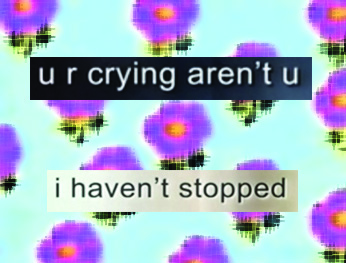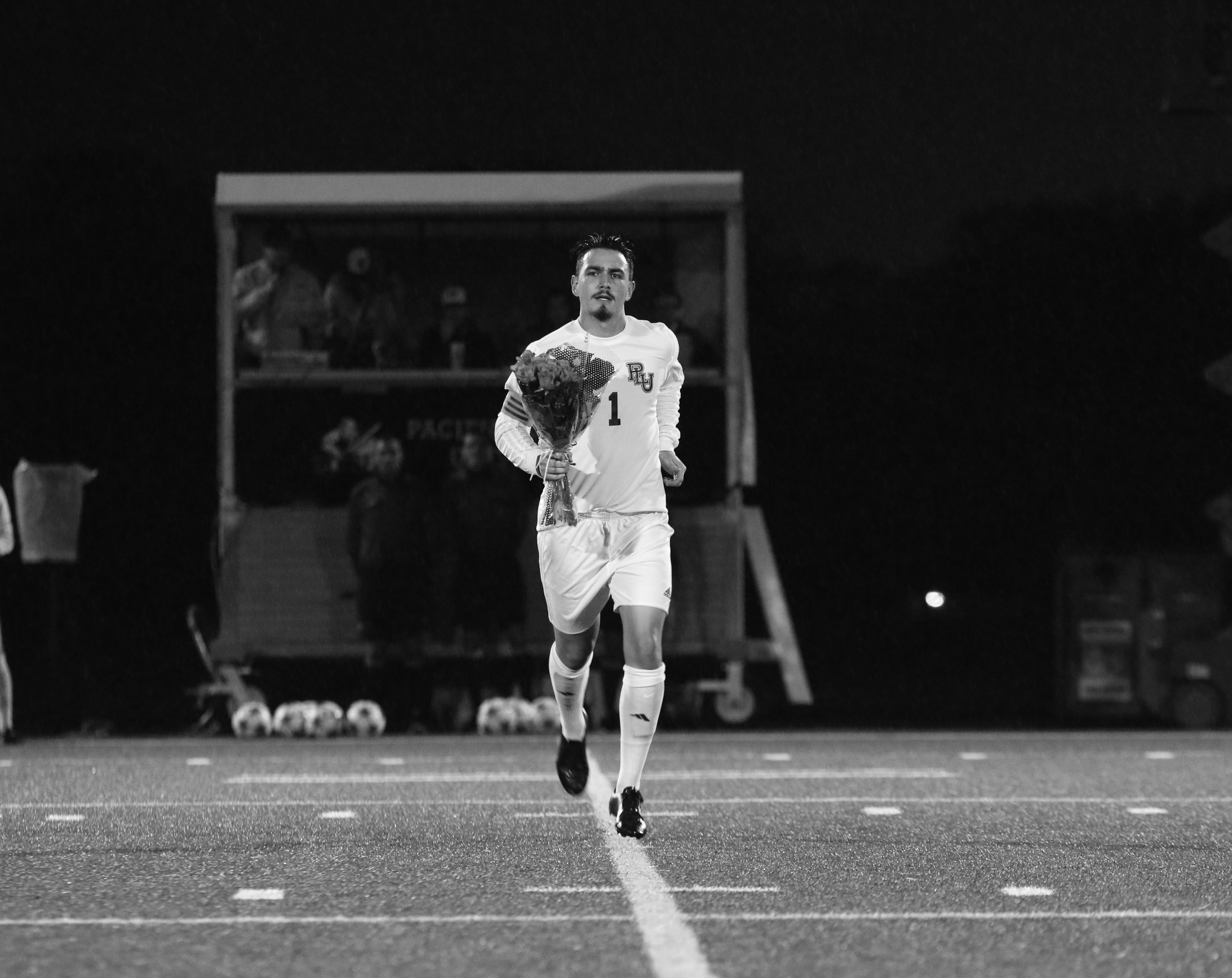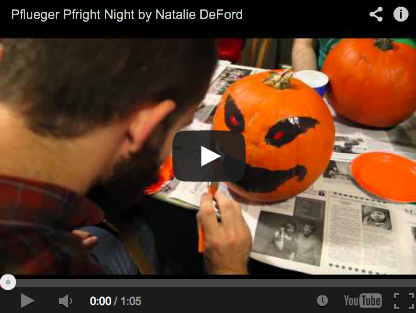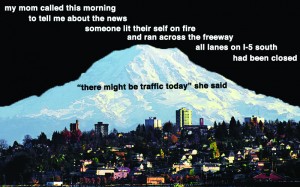
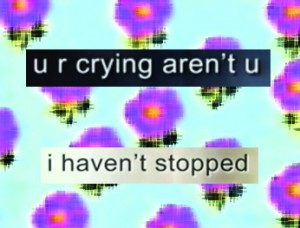
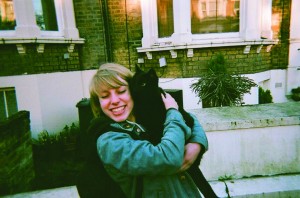
By Jakob Maier, Saxifrage Co-Editor
When asked to picture either a poem or a piece of visual art, people often conceive of two separate works: the visual as a painting on a canvas, a sketch in a notebook or a photograph in a frame, versus the poetic as a collection of words in black ink arranged on plain white paper.
This dichotomy held for years with few exceptions—that is, until the advent of the image macro as a poetic form.
The image macro, defined simply, is text placed on top of a picture. The poetic image macro emerged from the image-based online meme tradition.
Influenced by movements like pop art, and the work of conceptual artists such as Jenny Holzer, poetic macros consciously took the basic image form of online memes and incorporated artistic elements in order to create a new, internet-based form of poetic expression.
Like all robust artistic mediums, macros come in many styles, but generally share a similar mode of presentation: short-form poetry digitally situated within an image in order to create a piece of art that is based on the relationship between the two. As such, they resemble a collage in how they incorporate multiple elements in a single piece.
Thriving writing communities of the Internet and post-Internet movements make prolific use of the macro, utilizing its visually arresting and easily accessible form to communicate messages that range from somber to comic, sincere to absurd.
Writers post them on Twitter or Tumblr, where their simple and interesting juxtaposition of image and text can garner hundreds of thousands of likes, retweets and reblogs. In this manner, the macro is truly the poetic form of the information-inundated internet age.
Image macros abound on websites and online literary journals such as Internet Poetry, The Mall, and Have U Seen My Whale. Recently, they have found their way into print in collections such as Boost House’s 2014 release “The Yolo Pages.”
This collection, also featuring selections from weird Twitter such as @horse_ebooks and flarf poets like K. Silem Mohammad, presents the diverse work of macro artists like Michael Hessel-Mial, Ashley Opheim and Pacific Lutheran University’s own Angela Shier, who is one of the founding editors of The Mall.
In “Traffic,” Shier demonstrates a collage-based approach to macros, creating a three-tiered background of city, Mount Rainier and plain black field on which to foreground the poem.
The text follows the slope of the mountain, but uses the mountain’s body as a canvas for the poem’s climactic line.
The poem as a visual object takes place in the mountain’s presence in the canvas of the image, but the content of the poem itself also takes place in Mount Rainer’s shadow across I-5. In this way, this macro achieves a form of interconnectivity in which each of its elements reference the others in familiar terms.
Shier’s “Crying” is a more abstract macro form, wherein the text has no visual or emotional connection to its background. This disconnect causes the reader to need to create their own understanding of the link between text and image—in this way, the abstract macro relies on metaphor to achieve its success and meaning.
The image macro is still an emerging and evolving form, initially defined by the Internet but now beginning to branch out into books, prints and even wheatpasted street art. Its rich combination of poetry and art makes it an exciting form at the crossroads of writing, graphic design and visual art.
Be on the lookout for image macros on the Internet, and consider creating your own.

















